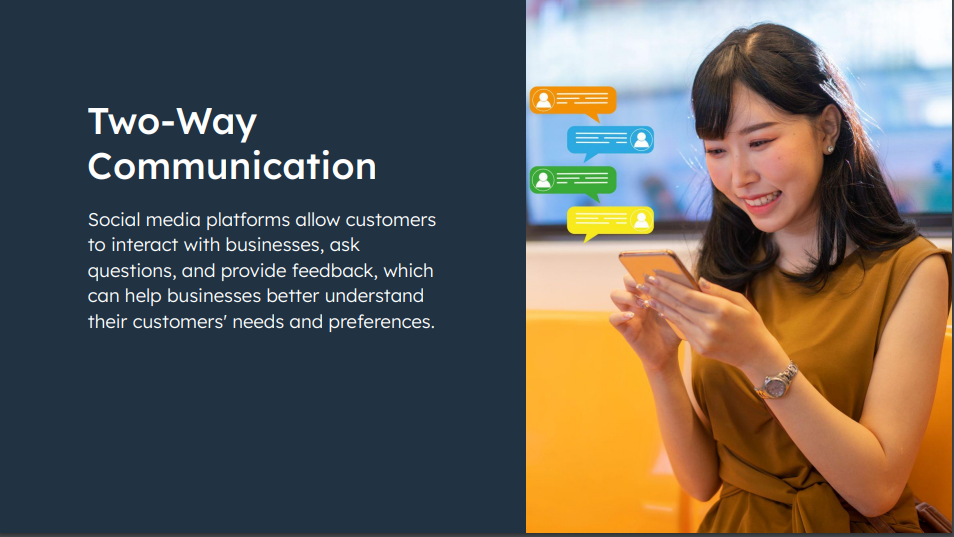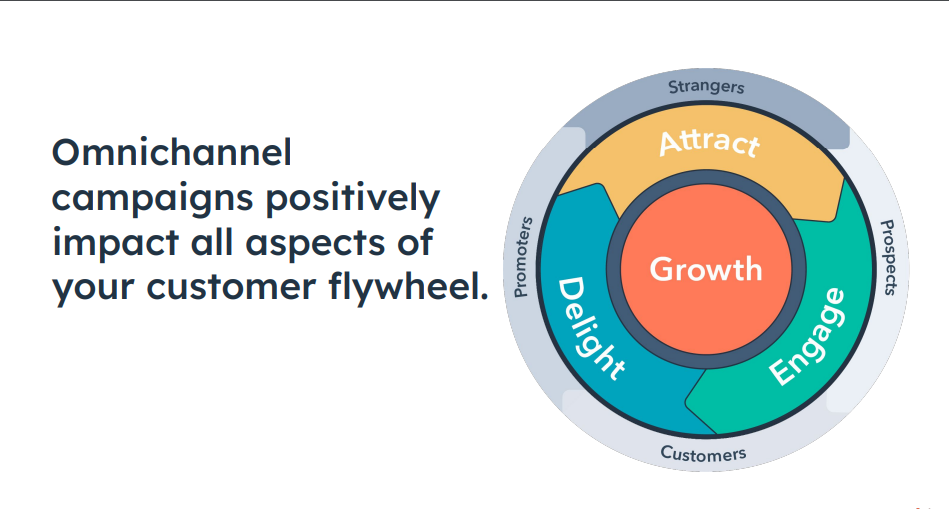Social media has become an integral part of omnichannel marketing strategies for businesses of all sizes. Omnichannel marketing refers to the practice of using multiple channels, such as email, websites, social media, and in-store experiences, to reach and engage customers in a consistent and cohesive way.
Advantages of Social Media in Omnichannel Marketing
One of the key advantages of using social media in omnichannel marketing is its ability to reach a large and diverse audience. With billions of active users on platforms like Facebook, Instagram, and TikTok, businesses have the opportunity to connect with potential customers from all around the world. Additionally, social media allows businesses to target their marketing e orts to specific groups of people based on demographics, interests, and behaviors, making it a highly e ective way to reach the right people with the right message.

Another benefit of using social media in omnichannel marketing is its ability to facilitate two-way communication. Social media platforms allow customers to interact with businesses, ask questions, and provide feedback, which can help businesses better understand their customers’ needs and preferences. This type of interaction can also help businesses build trust and credibility with their audience, as it demonstrates that the business is responsive and open to communication.

Omnichannel campaigns positively impact all aspects of your customer flywheel , too. How? By showing customers that you’re on all of the channels and platforms they’re on, they’ll know to expect a similar experience for their shopping and customer service experiences. For example, if your customer hears an ad on a podcast, then sees an influencer post on Pinterest which piques their interest, but they engage your brand on Facebook via the chat function, it all feels like similar experiences. To the customer, the time to respond and the type of response should feel the same regardless of what platform the customer chooses to use.
Not only is omnichannel marketing great for your customers, but it can help you make a positive impact on your bottom line. Matrix Marketing Group found that marketers using three or more channels in any campaign earned a 287% higher purchase rate than those using a single-channel campaign.
When it comes to integrating social media into your broader omnichannel strategy, there are a few things to consider.
First of all, your social media platforms are a goldmine of information about your customers that can be used to track and measure the e ectiveness of your marketing e orts. Most social media platforms o er detailed analytics and insights that allow businesses to see how their content is performing, which can help them optimize their marketing e orts and make more informed decisions. For example, your social media monitoring can reveal:
- Customer interests and demographics.
- Which platforms your customers prefer.
- Your customers’ preferences for interacting with your brand (e.g. public social post, chatbot, direct message, or links from social media to your site).
- Your competition’s marketing successes and failures.
- Feedback from your prospects and customers that can be used to make decisions
- about all points of your marketing strategy.
This type of monitoring can help businesses optimize their marketing e orts and gain a deeper understanding of their customers’ interests and preferences.
The idea of omnichannel marketing can seem daunting. But it doesn’t mean that you need to be on all the social media channels right away. Target the channel that matters most to individuals that fit your buyer persona, then expand to other channels when you’re ready. If your brand sells toys, then you might not find LinkedIn to be the right social channel to reach your customers, whereas Facebook is a better platform to reach parents.
Additionally, omnichannel marketing doesn’t mean that you’re posting the same content across multiple social media platforms. Instead, you’re tailoring the content to the platform while ensuring it remains recognizable to your customers regardless of the channel they view it on.
One thing to be careful of is that you don’t overuse boilerplate content. You might run into duplicate issues that could lead to being penalized by search engines and social media platforms. For example, it could mean that your content isn’t served up very high on search pages, or it may not appear often in user feeds. That’s why you don’t want to rely on copying and pasting everything. Additionally, instead of always using the same phrases, create a consistent brand voice that allows you to mix it up without looking inconsistent.
Best Practices for CTAs and Consistency in Omnichannel Marketing
Having clear CTAs is also an important part of omnichannel marketing. When your sales reps are on calls, they end with a call-to-action, just like your blog posts should also end with a CTA. Social media is no di erent. Your CTA should be device and platform-appropriate. For instance, a social ad should lead to a mobile website, not the desktop version of your site. Make sure the CTA doesn’t throw o the customer and that it only extends the seamless experience you’ve already provided.
Next, ensure that you’re posting consistently and are engaging with users who reach out to you via social channels. If you consistently engage with users on Instagram but don’t answer on Facebook, they’ll notice. Focusing on one and neglecting the other will make your brand look inconsistent and unprofessional. You need to have a similar response approach regardless of where your customers might be viewing your content.
Ashared inbox can be useful for this; putting your social messages, emails, and chat threads into one place. Some social management tools, like the one in the HubSpot Marketing Hub , will even connect your social campaigns to your CRM, so you can keep track of visits and leads.
Cross-promoting your social media across your other channels is also essential to omnichannel marketing. For example you can promote a social contest through email, or vice versa, post on social media for people to sign up for your email newsletter. When it comes to paid media, the first-party customer data that you collect from your website can be uploaded to social platforms to retarget your ads to customers. You can include campaign hashtags and QR codes in outdoor advertising, or if you host an event, you can create a space where people can take photos and upload selfies to the event hashtag.
Overall, social media plays a crucial role in omnichannel marketing by helping businesses reach a large and diverse audience, facilitate two-way communication, and track and measure the e ectiveness of their marketing e orts. By leveraging the power of social media, businesses can create a cohesive and integrated marketing strategy that helps them connect with their customers in a meaningful way.



















